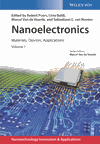RF CMOS
Abstract
This chapter discusses the main trends that are observed in the field of RF CMOS. Fifth generation (5G) puts severe demands on the requirements of RF CMOS and it is important to understand the consequences. 5G is the key enabler of the Internet of Things (IoT) or Internet of Everything (IoE). CMOS is the technology of choice for mass production digital circuits. This is mainly because of the so-called Moore's law, that is, every new generation allows integrating more transistors in the same area with a reduced power consumption. The chapter shows few major challenges that an analog designer faces at millimeter-wave frequencies. It also shows the noise figure (NF) of recently published state-of-the-art low-noise amplifiers (LNA) against frequency of operation. With the continuing scaling of CMOS nodes and increases in operation frequency of RF integrated circuits, there is an increasing interest in reaching beyond the millimeter-wave frequencies into the terahertz spectrum.



